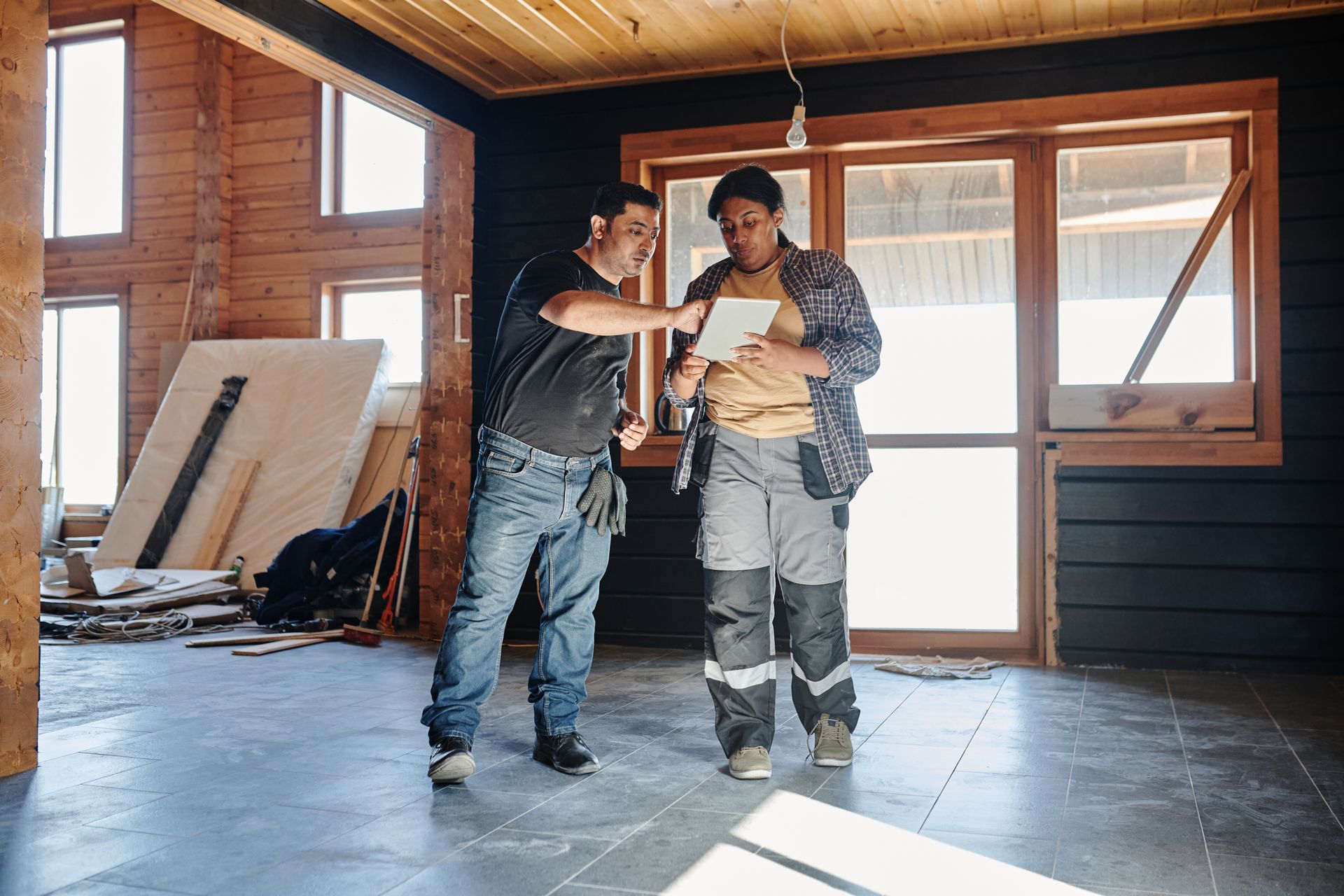Abbotsford Home Renovations
Home Renovations Abbotsford: Innovative Sustainable Practices In General Contracting
Imagine a world where every construction project is a testament to sustainability. From cutting-edge technology to visionary designs, these innovative practices are reshaping the construction industry as we know it.
This article will discover how
general contracting lead a sustainable revolution with innovative practices, paving the way for a greener and more efficient future. By embracing sustainability, they are building structures and forging a brighter future.

Sustainable Practices That Contribute To A Greener Built Environment
Net-Zero Energy Buildings:
- To minimize energy consumption, general contractors can focus on implementing energy-efficient designs, including high-performance insulation, advanced air sealing, and efficient HVAC systems.
- Integrating renewable energy systems, such as solar panels or wind turbines, allows buildings to generate clean energy on-site.
- Energy management systems and smart controls optimize energy usage, monitor performance, and facilitate efficient operation and maintenance.
Passive House Construction:
- General contractors in home renovations can prioritize airtight construction, utilizing high-quality insulation, triple-glazed windows, and heat recovery ventilation systems to achieve excellent thermal performance.
- Advanced energy modelling software helps ensure compliance with the stringent energy efficiency requirements of the Passive House standard.
- General contractors collaborate closely with architects, energy consultants, and building envelope specialists to achieve the desired level of performance.
Indigenous Cultural Considerations:
- When working on home renovations involving Indigenous communities, general contractors engage in meaningful consultations and collaborations with Indigenous stakeholders.
- Incorporation of traditional Indigenous building practices and materials, such as natural and locally sourced materials, respects cultural values and promotes sustainability.
- By fostering partnerships with Indigenous communities, general contractors can support capacity-building initiatives and promote sustainable construction methods.
Green Infrastructure Integration:
- General contractors can work with landscape architects and engineers to incorporate green infrastructure elements into their projects.
- Bioswales and rain gardens help manage stormwater runoff by allowing water to infiltrate the ground, filter pollutants, and reduce strain on municipal sewer systems.
- Green roofs provide insulation, reduce urban heat island effects, and offer opportunities for urban agriculture or habitat creation.
- Permeable pavements allow rainwater to infiltrate the ground, replenishing groundwater reserves.
Energy-Efficient Lighting Systems:
- General contractors can collaborate with lighting designers and engineers to implement energy-efficient lighting systems.
- LED lighting fixtures provide high-quality illumination while consuming significantly less energy than traditional lighting technologies.
- Occupancy sensors and daylight harvesting systems automatically adjust lighting levels based on occupancy and natural light availability, reducing energy waste.
Geothermal Heating and Cooling:
- General contractors can collaborate with geothermal experts to design and install geothermal heat pump systems.
- These systems utilize the earth's stable temperature to efficiently heat and cool buildings, reducing reliance on fossil fuels and lowering greenhouse gas emissions.
- Geothermal systems require proper site assessment, drilling, and installation of ground loops or wells to maximize energy efficiency and system performance.
Water Conservation Measures:
- General contractors can install water-efficient fixtures, such as low-flow toilets and faucets, to lessen water consumption without compromising performance.
- Rainwater harvesting systems collect rainwater from roofs for non-potable uses like irrigation, reducing the demand for freshwater resources.
- Smart irrigation systems utilize weather data and soil moisture sensors to optimize watering schedules and minimize water waste.
Life Cycle Assessment (LCA):
- General contractors can conduct comprehensive life cycle assessments of construction materials and systems to evaluate their environmental impact.
- LCA considers raw material extraction, manufacturing, transportation, use phase, and end-of-life disposal or recycling.
- By selecting materials with lower embodied energy and environmental impacts, general contractors can minimize the carbon footprint of their projects.
Collaborative Design and Construction:
- General contractors can adopt collaborative project delivery methods, such as integrated or design-build, to foster collaboration among project stakeholders.
- Early involvement of architects, engineers, and sustainability consultants ensures that sustainability goals are integrated into the design and construction process.
- Effective communication, shared decision-making, and streamlined workflows enhance project efficiency and sustainability outcomes.
Public Transportation and Infrastructure:
- General contractors can support sustainability by incorporating public transportation infrastructure into their projects.
- This includes the construction of transit hubs, bike lanes, and pedestrian-friendly amenities to encourage the use of sustainable transportation options.
- Integrating electric vehicle charging stations in parking facilities promotes the adoption of electric vehicles and reduces greenhouse gas emissions.

Choosing Innovative Sustainable Materials For Home Renovations
Recycled and reclaimed materials:
These materials are sourced from salvaged or recycled sources, diverting waste from landfills and reducing the need for new resource extraction. For example, recycled metal can be used for structural elements, reclaimed wood can be repurposed for flooring or panelling, and recycled concrete aggregates can be used as a base material.
Engineered wood products:
Engineered wood, such as cross-laminated timber (CLT) and laminated veneer lumber (LVL), offers a sustainable alternative to traditional solid timber. These products are made by bonding layers of wood together, resulting in stronger and more dimensionally stable materials. Engineered wood reduces the demand for old-growth timber and promotes sustainable forestry practices.
Sustainable insulation materials:
Insulation is important for energy efficiency in buildings. Sustainable insulation options include natural materials like sheep's wool, which is renewable and biodegradable, and hemp, which requires fewer pesticides and fertilizers than other crops. Cellulose insulation from recycled paper provides excellent thermal performance and reduces landfill waste. Insulation made from recycled denim or glass fibres helps divert materials from the waste stream.
High-performance glass:
Energy-efficient windows and glazing systems help reduce heat transfer and improve comfort. Low-emissivity (low-E) coatings on glass minimize heat loss during colder months and reduce heat in warmer months. Insulated glazing units (IGUs) consist of multiple layers of glass with an insulating airspace in between, improving thermal efficiency. These glass options help reduce heating and cooling costs and enhance occupant comfort.
Green concrete alternatives:
Concrete production is a significant source of carbon emissions. Green concrete alternatives include geopolymer concrete, which uses industrial byproducts like fly ash or slag instead of traditional cement, resulting in lower carbon emissions. Incorporating recycled aggregates into concrete reduces the demand for virgin materials and diverts waste from landfills.
Photovoltaic (PV) materials:
Photovoltaic materials like solar panels enable buildings to generate clean electricity on-site. Solar panels can be integrated into roofs, facades, or shading structures, providing renewable energy and reducing reliance on grid power. Advances in solar technology have led to more efficient and aesthetically appealing options, making them increasingly popular in sustainable construction projects.
Low VOC paints and finishes:
Conventional paints and finishes often contain volatile organic compounds (VOCs), which can contribute to indoor air pollution and health issues. Low VOC or zero VOC alternatives use water-based or natural oil-based formulas, minimizing harmful emissions. These eco-friendly options promote healthier indoor air quality and reduce environmental impact.
Sustainable roofing materials:
Roofing materials play an essential role in protecting buildings and improving energy efficiency. Sustainable options include recycled metal, which is durable and recyclable at the end of its life cycle. Clay or concrete tiles offer longevity, low maintenance, and thermal insulation properties. Rubber shingles made from recycled tires provide excellent durability and reduce waste from tire disposal.
Promoting A Sustainable Lifestyle On Home Renovations Abbotsford
Promoting a sustainable lifestyle through home renovations is essential to creating a greener and more environmentally friendly living space. By incorporating sustainable practices into renovation projects, homeowners can positively impact the environment while enjoying numerous benefits.
Abbotsford Home Renovations promotes sustainable practices in our home renovations services, allowing homeowners to create a space that meets their evolving requirements, aligns with their style preferences, and promotes an enriching lifestyle.
